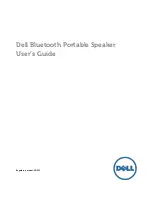
4.2.
ENGINE OIL
p
p
WARNING! Exposing the skin for long periods and repeatedly to used engine oil can cause cancer. It is obvious that the risk
is relatively low unless oil is handled every day and for a long period of time. However, it is recommended to carefully wash
hands immediately after handling used oil.
Drain the engine oil when the engine is warm to ensure quick and complete drainage.
4.2.1. Remove the cover plate, fig. 4.C.
4.2.2. Place a suitable container below the drain plug (fig. 7.1). Remove the dipstick and the oil
drain plug and washer and let the oil drain completely.
4.2.3. Refit the oil drain plug and washer and the cover plate.
4.2.4. Fill the sump with new oil, through the dipstick hole, up to the dipstick upper level (see 3.2.4-7.).
4.3. OIL STRAINER
Important! Before removing the oil filter ensure that the oil has been drained (para. 4.2.).
4.3.1. Remove the side panel (fig. 4.A).
4.3.2. Remove the screw from the strainer end (fig. 7.2) and pull out the strainer.
4.3.3. Rinse the oil strainer in clean petrol or diesel and then thoroughly dry it.
4.3.4. Replace the strainer and retaining screw.
Important! DO NOT forget to fill the sump with fresh oil (para. 4.2.).
4.3.5. Refit the dipstick and side panel.
Notes: 1 Service more often if used in dusty conditions.
2 These services must be carried out by an authorised Service Agent.
YG10.48 - 1 - 070703
4. MAINTENANCE
4.1.
GENERAL MAINTENANCE SCHEDULE
p
p
WARNING!
All maintenance work is carried out when the engine is not running. If the engine must
be run, ensure that the working area is well ventilated. Exhaust gases contain carbon monoxide and
exposure to this toxic gas can cause loss of consciousness and death.
p
p
WARNING!
If the engine has just been running, the exhaust system will be very hot, take care not
to touch it.
3
The oil, oil filter, air filter and fuel filter must be serviced regularly. All other maintenance must be carried out by your local Sealey service agent.
3
Before carrying out any maintenance disconnect the negative cable from the battery terminal to prevent accidental starting or shorting.
Maintenance Period
First month
3 months
6 months
1 year
Operation
or 20 hours
or 100 hours
or 500 hours
or 1000 hours
Drain and clean the fuel tank
l
Change the engine oil
l
l
Check and adjust the valve clearances (2)
l
l
Clean the generating set
l
Check battery
l
Clean the oil strainer
l
Replace the air filter (1)
l
Check injection system (2)
l
Check cylinder head bolt torque (2)
l
Replace the fuel filter
l
Replace piston rings (2)
l
Reseat the valves (2)
l
3.4.
STARTING THE GENERATOR
p
p
WARNING! The output sockets will be live once the engine has started.
3.4.1. Ensure that you have performed all actions in paras. 3.1., 3.2. and 3.3.
3.4.2. Open the engine hatch (fig. 4.B) and move the fuel control (fig. 2.B) to the Run position.
3.4.3. Insert the key (fig. 2.A) and turn it clockwise to operate the starter motor.
3.4.4. As soon as the engine starts release the key.
If the engine fails to start do not operate the starter motor for more than 5 seconds. Leave for 15 seconds and then try again. If it still will
not start refer to Troubleshooting section. If necessary contact your authorised Sealey service agent.
3.4.5. Once the engine is running close the engine hatch, engaging top and bottom latches.
Note: There is a decompression lever on the top of the engine (fig. 5) which is only used on recoil start models. It is not used on this electric
start model and must remain in the vertical position at all times.
3.5.
USING THE GENERATOR
p
p
WARNING! Do not exceed the wattage capacity of the generator.
3.5.1. Allow the engine to warm up (approximately 3 minutes).
3.5.2. Select the required voltage output using the voltage selector switch (fig. 6).
3.5.3. Connect the equipment to the appropriate generator socket.
3.5.4. Always observe the safety instructions of the equipment being used.
3.5.5. Carry out the following checks whilst the generator is in use:
Is there any vibration or abnormal noise?
Is the engine not running smoothly?
What colour is the exhaust gas (it should be clear once the engine is warm)?
3.5.6. If you notice anything wrong, stop the generator (para. 3.6.) and contact your local servicing agent.
3.6.
STOPPING THE GENERATOR
3.6.1. Disconnect the electrical load.
3.6.2. Allow the engine to run unloaded for 3 minutes and then open the engine hatch (fig. 4.B).
3.6.3. Stop the engine by moving the red lever (fig. 2.C) to the Stop position.
3.6.4. Turn off the key, remove it and close the hatch.
fig. 7
fig. 6
fig. 5























